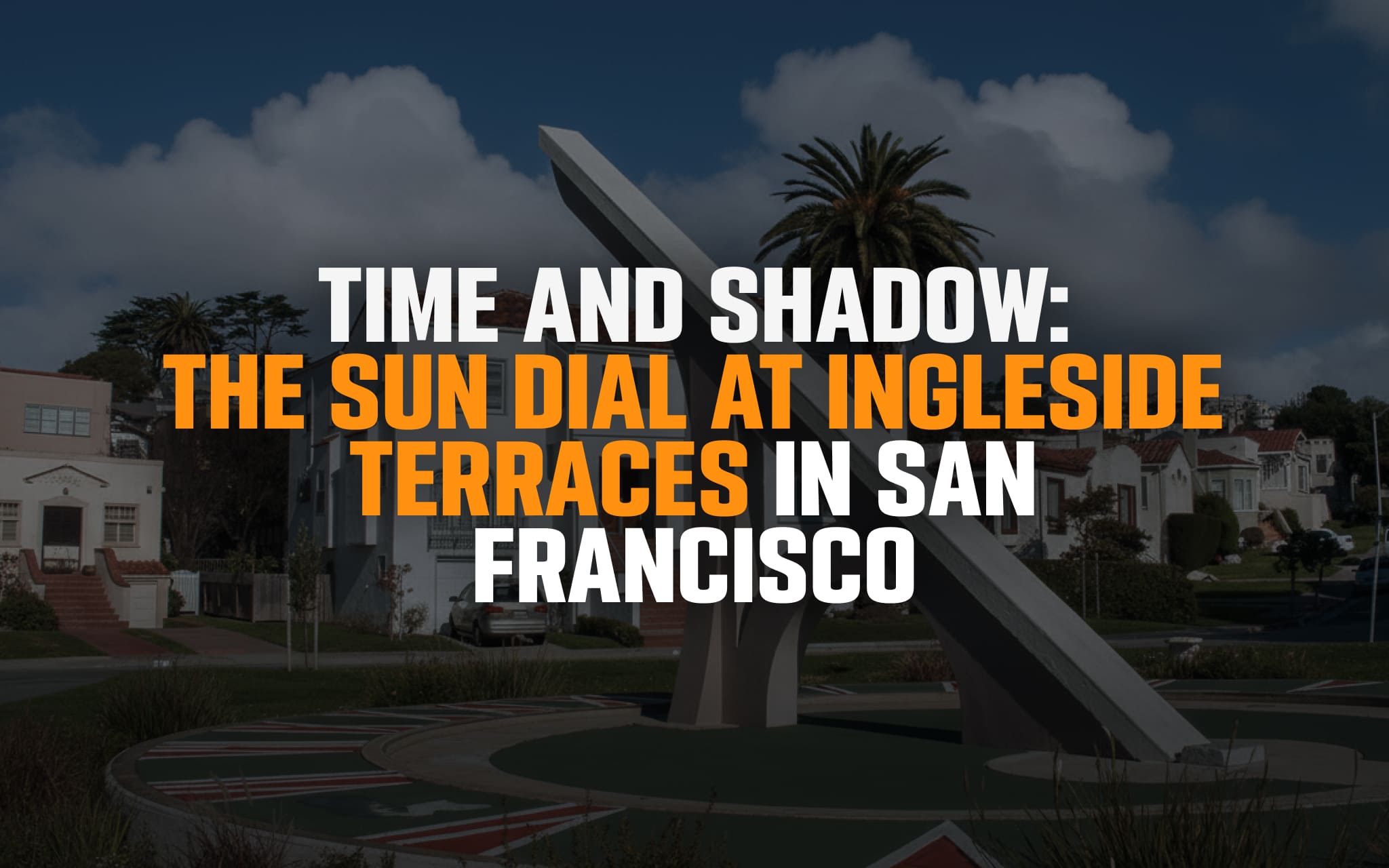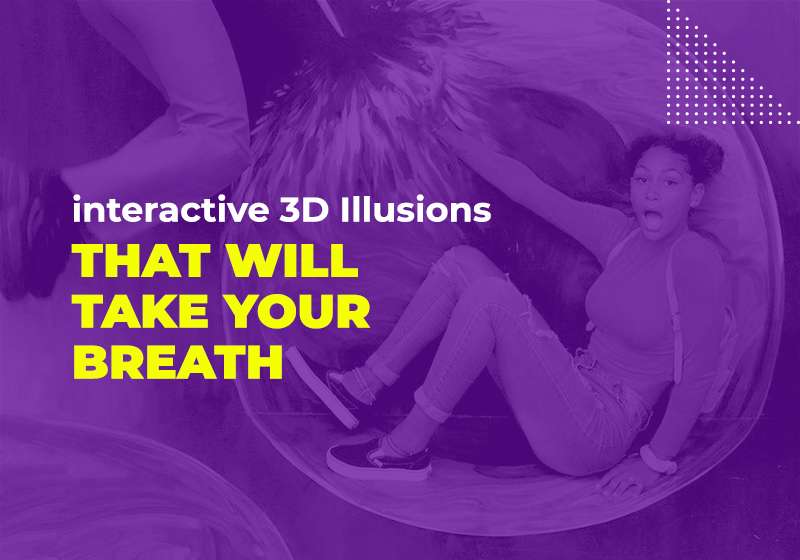
The Sun Dial at Ingleside Terraces captures light in a way that feels almost cinematic, turning the movement of the sun into a quiet daily performance. Towering over its circular plaza, this massive concrete structure measures more than 28 feet across, with a bronze gnomon reaching roughly 26 feet into the sky. As sunlight hits its angled blade, the shadow glides across a band of carved Roman numerals, marking the passage of each hour in a method that has remained unchanged for centuries.
This particular sun dial is one of the largest in the world, designed with both precision and artistry. It uses the same ancient principles once employed by astronomers and navigators: a fixed pointer aligned with the Earth’s rotational axis and a carefully calibrated surface to catch its shadow. Positioned to match San Francisco’s latitude, its accuracy is remarkable — a testament to the early 20th-century engineers who combined science and aesthetics to create an enduring monument to time itself.
Even today, standing beside it, you can trace the curve of the shadow and feel the day unfold. Morning light creeps along its eastern edge, while evening shadows sweep slowly westward. This blend of mathematical accuracy and architectural grace reveals how the sun dial transforms something as abstract as time into a visible, tangible experience in the open air of San Francisco.
History, Purpose, and Symbolism of the Sun Dial at Ingleside Terraces
The Sun Dial at Ingleside Terraces was unveiled in 1913 as part of a grand vision to create a new kind of residential community in San Francisco. Developed by Joseph A. Leonard, the neighborhood was marketed as a “residence park,” combining suburban tranquility with city access. The sun dial became its signature centerpiece, symbolizing progress, permanence, and harmony with nature. It wasn’t just a scientific instrument—it was a statement about modern living illuminated by the light of the future.
Originally, the site was far more elaborate than what visitors see today. The sun dial stood within a circular reflecting pool bordered by low balustrades and ornamental urns, surrounded by paved paths representing the four seasons. Fountains once gushed from sculpted basins, and sculptural groups representing the “Four Ages of Man” stood at each cardinal point. Though many of these details have faded over time, historic photographs reveal a design deeply rooted in early-20th-century ideals of beauty, order, and symbolism.
When it was first dedicated, the sun dial was accompanied by a community celebration attended by hundreds of San Francisco residents. The event was meant to signal the rise of a new kind of city development—planned, cohesive, and artful. Over a century later, the monument still carries that legacy, quietly connecting modern visitors to the optimism and craftsmanship that shaped its creation.
Visiting Today: Location, Access, and What Visitors See
The sun dial remains in its original position at Entrada Court, near Urbano Drive in the Ingleside Terraces neighborhood of San Francisco. It is surrounded by stately homes and leafy streets that once formed part of a private racetrack before the area was redeveloped. Though the fountains and sculptures have long vanished, the sun dial itself endures as the neighborhood’s most recognizable landmark.
Visitors approaching the site find a circular plaza set with stone paths that converge on the base of the great bronze gnomon. The shadow line still traces time with surprising precision on sunny days, while in the evening the monument catches the soft golden glow unique to San Francisco’s western hills. Its presence is peaceful but commanding, a work of design that has quietly resisted a century of change.
While Ingleside Terraces is primarily residential, the sun dial can be visited respectfully by anyone interested in local history or architecture. Standing there, you can imagine the elegance of its original gardens and the pride of those who saw it unveiled more than a hundred years ago—a simple structure transformed into a poetic emblem of endurance and time.
Solar Time in San Francisco and How the Sun Dial Tracks It
At first glance, the sun dial seems like an ornament, but its shadow moves with impressive accuracy that reflects San Francisco’s unique latitude. Its gnomon is angled roughly 37.7 degrees—precisely parallel to the Earth’s axis—allowing it to tell true solar time. When the sun is at its highest point, the shadow falls directly at noon, though the city’s standard clock time may differ slightly depending on the season.
For those who watch closely, the sun dial becomes a lesson in astronomy. Its shadow lengthens and shortens as the months change, showing how the Earth tilts and spins in space. On the longest days of summer, the shadow barely reaches the numerals, while in winter it stretches far beyond them, a graceful dance of geometry and light that repeats endlessly above San Francisco’s southern hills.
The city’s climate adds its own twist. Morning fog often drifts across Ingleside Terraces, muting the sun and softening the shadows until late morning. When the sky clears, though, the sun dial comes alive again—its markings etched in bright contrast. It is a structure that relies on clarity and patience, rewarding those who stop to observe how time itself becomes visible under the shifting San Francisco sky.
Light, Illusion, and Perception: A Visit to the Museum of 3D Illusions
Much like the sun dial transforms sunlight into visible motion, the Museum of 3D Illusions in San Francisco transforms light and perspective into pure visual play. Located in the heart of the city, it invites visitors to step inside paintings that defy logic and gravity. Here, instead of measuring time, guests measure imagination—posing for photographs that turn them into part of the art itself.
Within its halls, visitors might find themselves tiptoeing across a razor-thin mountain edge or sinking into the glow of a sunset beach where the sand and sea seem to spill from the walls. Each illusion is carefully designed by 3D artists to bend perspective and trick the eye, making you question where reality ends and illusion begins. The experience is both creative and participatory—where you become the subject, the performer, and the artwork all at once.
The Museum’s second attraction, Smash It!, takes a different approach to release and perception. Here, guests can channel emotion through motion, breaking plates decorated with their frustrations in a space designed for cathartic energy. Together, the Museum of 3D Illusions and the Sun Dial at Ingleside Terraces form a curious harmony—one ancient and solar, one modern and artistic—both proving that San Francisco remains a city where light, perspective, and creativity intertwine.
FAQ
Why is the Sun Dial at Ingleside Terraces in San Francisco considered significant?
This remarkable sun dial is more than a timekeeping device—it symbolizes the city’s early 20th-century innovation. Built in 1913, it represents both scientific precision and artistic vision, making it a beloved San Francisco landmark admired for its craftsmanship and lasting presence.
How does the sun dial compare to modern attractions in San Francisco like the Museum of 3D Illusions?
While the sun dial uses real sunlight and shadow to reveal time, the Museum of 3D Illusions in San Francisco plays with perception through painted depth and perspective. Both celebrate creativity and human ingenuity, offering visitors distinct ways to experience light and space.


